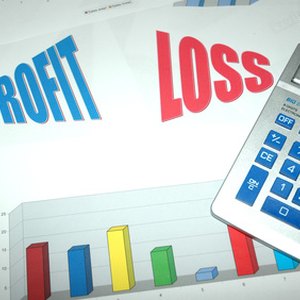
Low-volume stocks trade between 10,000 and 100,000 shares a day. Some may have no trades at all on certain days. The biggest risk of trading low-volume stocks is limited liquidity. If there is no market for a stock, a large buy order could drive up the price and a large sell order could depress it. When the market declines, you may not be able to sell your shares quickly unless you accept a much lower price, suffering an unexpected loss.
Check the spread between the bid and the ask. The ask is the lowest price at which you can buy the stock. The bid is the highest price at which you can sell the stock. Most online broker trading platforms show at least the highest bid and the lowest ask. On actively traded stocks, the spread may be as little as 1 cent, but on low volume stocks it can be as wide as $1. For example, if you buy 100 shares of a thinly traded stock, you may pay $12 on the ask, but if you were to turn around and sell right away, you would only get $11 on the bid. The difference is the profit the specialist or the market maker makes. You’d better be sure that you really want a stock with such a wide spread.
Use intraday buy limit AON (All Or None) orders. If you place a market order to buy, say, 1,000 shares of a low-volume stock, only the first 100 shares must be filled at the quoted price. The rest may get filled at much higher prices, so the price “will run away from you.” Once your order is filled, the price will go back down to normal. If you place a limit order to buy 1,000 shares, you may not get the entire 1,000 shares filled as the price will move away from you. Each time you adjust the limit price upward to get the entire 1,000 shares, your broker will charge you a separate commission. But if you place an AON limit buy order, it will only get filled if the entire 1,000 shares are available at the specified price. If you are patient, you can place a limit GTC (Good Till Cancelled) order to buy which will give you up to 60 days to acquire your position.
Set mental stop-loss orders but do not place them. A market maker will drive the stock price down just to clear all accumulated below the market orders, selling you out prematurely. The price then promptly goes back up to where it was originally.
Use limit GTC (Good Till Cancelled) orders to sell to take the profit. The risk here is that if the stock is under selling pressure, you may never get the price you ask and miss your opportunity.
Tips
If you are an active trader, stick with more liquid stocks trading at least 100,000 shares daily. Alternatively, you can carry a small position “just in case”: if the stock rises, you make a large percentage profit on a small investment; if it declines, your dollar loss is small.
Warnings
The biggest risk of trading a low volume stock is that you don’t know how it will behave in a declining market. Some low volume stocks that are in strong hands hold up well while others may drop suddenly on any pickup in selling. You won’t find out what your stock will do until you have to sell.
References
- “Trading for a Living”; Dr. Alexander Elder; 1993
- “Technical Analysis of Stock Trends”; Robert D. Edwards, John Magee; 2001
- U.S. Securities and Exchange Commission. "Limit Orders." Accessed June 1, 2020.
- U.S. Securities and Exchange Commission. "Limit Orders." Accessed June 1, 2020.
- U.S. Securities and Exchange Commission. "Types of Orders." Accessed June 1, 2020.
- Financial Industry Regulatory Authority. "Understanding Order Types Can Save Time and Money." Accessed June 1, 2020.
- Charles Schwab & Co. "Mastering the Order Types: Limit Orders." Accessed June 1, 2020.
- Charles Schwab & Co. "3 Order Types: Market, Limit and Stop Orders." Accessed June 1, 2020.
- Corporate Finance Institute. "Trade Order." Accessed June 1, 2020.
Tips
- If you are an active trader, stick with more liquid stocks trading at least 100,000 shares daily. Alternatively, you can carry a small position "just in case": if the stock rises, you make a large percentage profit on a small investment; if it declines, your dollar loss is small.
Warnings
- The biggest risk of trading a low volume stock is that you don't know how it will behave in a declining market. Some low volume stocks that are in strong hands hold up well while others may drop suddenly on any pickup in selling. You won't find out what your stock will do until you have to sell.
Writer Bio
Based in San Diego, Slav Fedorov started writing for online publications in 2007, specializing in stock trading. He has worked in financial services for more than 20 years, serving as a banker, financial planner and stockbroker. Now working as a professional trader, Fedorov is also the founder of a stock-picking company.

